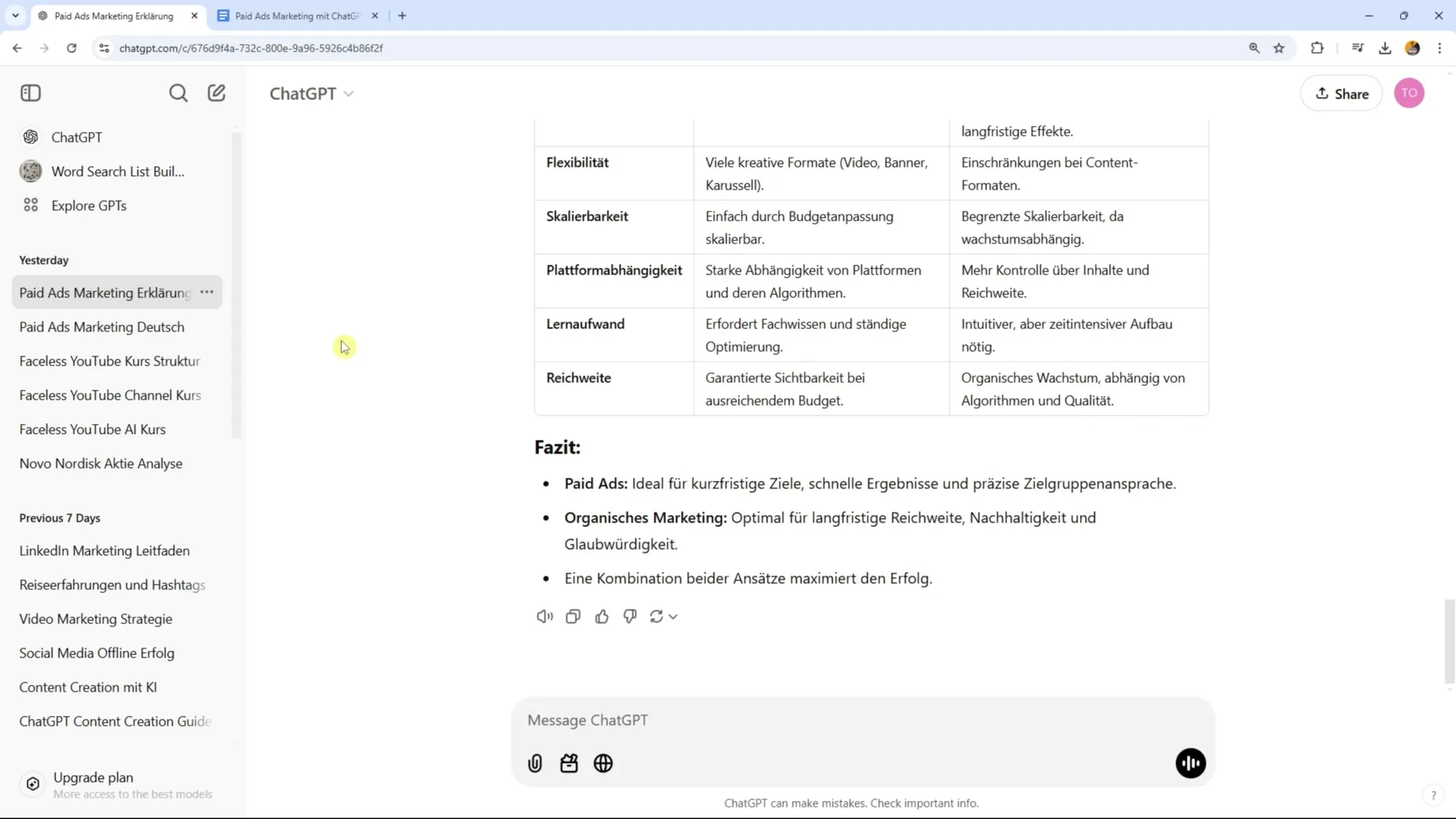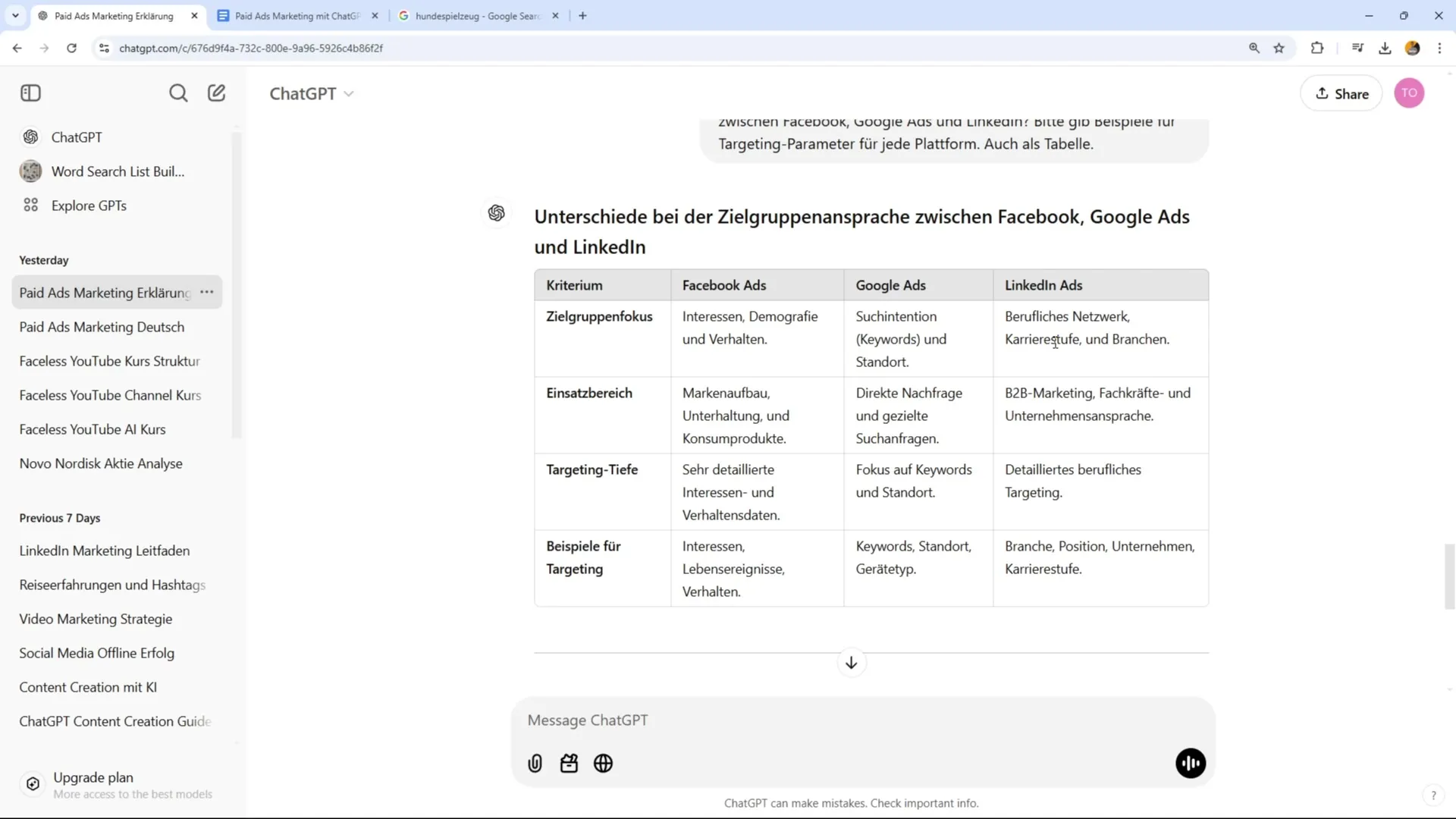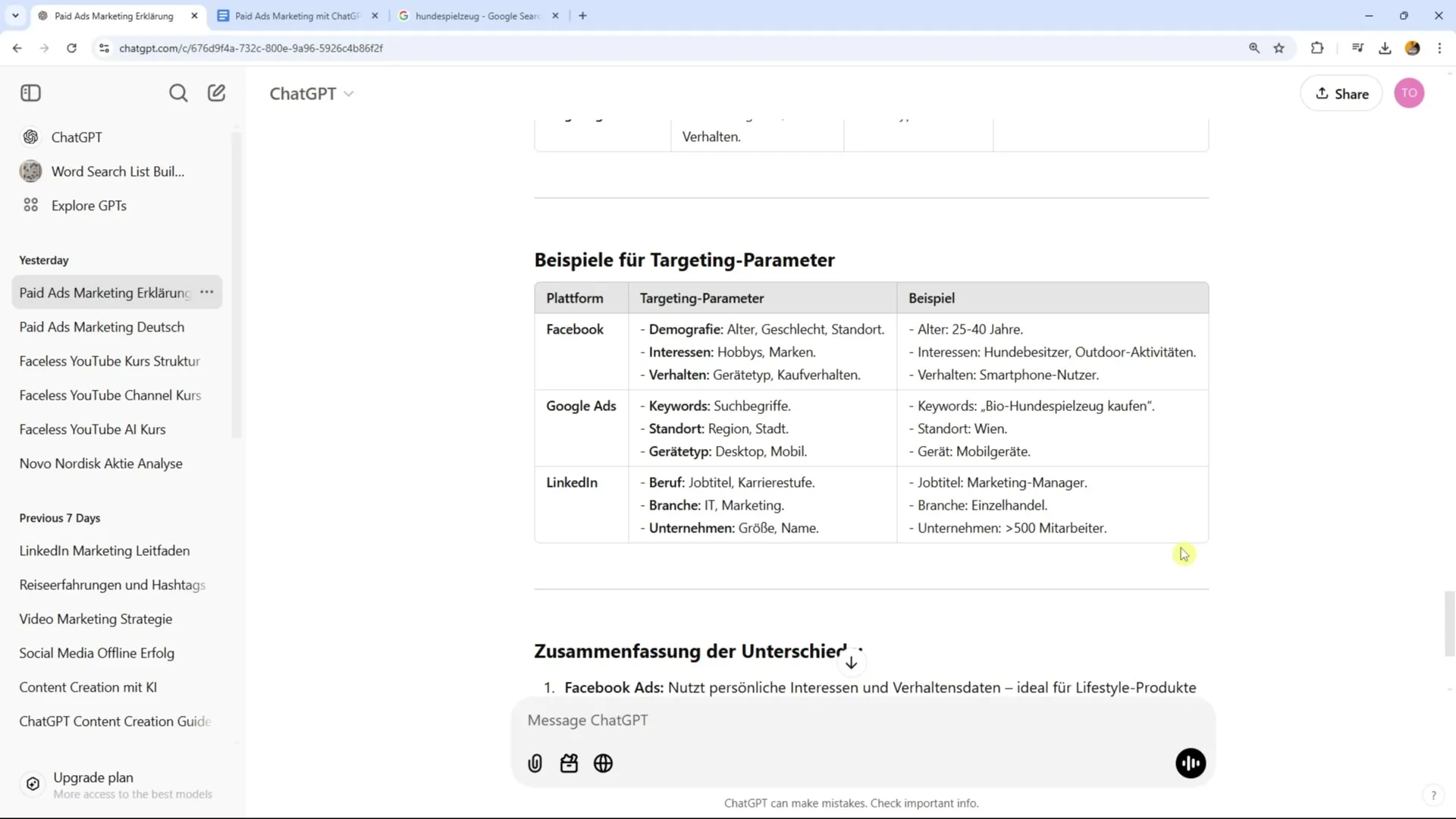The addressing of target groups is one of the most crucial components for the success of your online advertising. The platform on which you run your ads influences how you reach your potential customers. Each platform has specific targetingoptionsthat allow you to precisely address your target audience. This tutorial guides you through the differences in audience targeting on Facebook, Google, and LinkedIn, and shows you how to optimally use these platforms for your advertising strategy.
Key Insights
- Facebook (including Instagram) offers detailed targeting options based on interests, demographics, and behavior.
- Google Ads is based on users' search intent, keywords, and geographic location.
- LinkedIn primarily targets business customers and focuses on career, industry, and professional networks.
Step-by-Step Guide
1. Facebook Advertising and its Audience Targeting
Facebook has a variety of targeting options that help you reach specific groups. For example, you can target dog lovers who are interested in vegan nutrition and are between 18 and 32 years old. By using interests, demographic data, and behavioral details, you can define your target audience very precisely. However, note that Apple users currently share less data with Facebook, which may affect your targeting.

2. Google Ads: Focusing on Search Intent
In contrast to Facebook, the focus of GoogleAds is on users' search intent. Here, you can target your audience by selecting specific keywords. For example, if someone searches for "buy dog toys," you can ensure that your ads are prominently placed. An important feature of Google Ads is the ability to narrow targeting by geographic locations, which is especially effective for local offers.
3. LinkedIn Advertising: Targeting B2B Audiences
LinkedIn is a valuable platform for B2B advertising due to its professional orientation. Here, the targeting options are based on career and industry data. You can specify the company size, industry, and career level of your target audience. This option makes LinkedIn particularly suitable for marketing and recruiting ads. It is important to tailor and professionalize the communication on LinkedIn, as it mainly addresses professionals.

4. Comparison of Success Parameters
The various platforms use different success parameters for their ads. Facebook often focuses on engagement and brand building, while Google Ads aims at direct demand and search interest. LinkedIn, on the other hand, primarily focuses on addressing professionals and corporate decisions. You need to consider that the same ad can lead to different results across different platforms.
5. Best Practices for Effective Targeting
To achieve the best results, it is advisable to design your ads individually for each platform. On Facebook, you need good visual content and a deep understanding of your target audience. For Google, precise keyword analysis is essential, while LinkedIn requires a professional appearance and accurate industry targeting. Make sure to take into account the specific characteristics and preferences of your target audience to maximize the effectiveness of your campaigns.

Summary – Understanding Targeted Advertising: Targeting Options on Different Platforms
Selecting the right targeting options for your ads on Facebook, Google, and LinkedIn can be crucial for the success of your marketing strategies. Through targeted addressing, you can efficiently reach your customers and increase conversion rates.
FAQ
How do targeting options work on Facebook?Facebook offers targeting based on interests, demographics, and behavior.
What is the difference between Google Ads and Facebook advertising?Google Ads focuses on search intent, while Facebook targets user behavior.
How can LinkedIn ads be used effectively?LinkedIn ads are ideal for reaching B2B contacts through precise professional targeting.
What should I consider when targeting on Google?Selecting specific keywords and narrowing down by location are crucial for Google Ads.
Why is the same ad format not suitable for all platforms?Each platform has its own target audiences and interaction forms, leading to different results.


